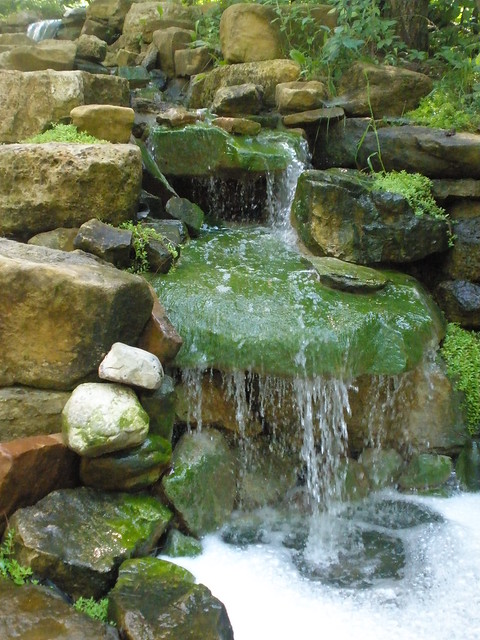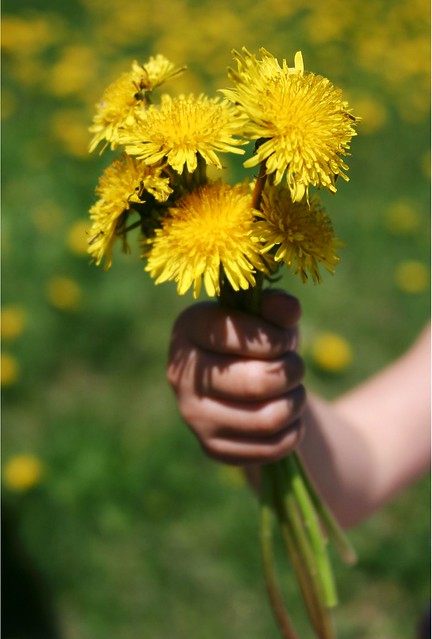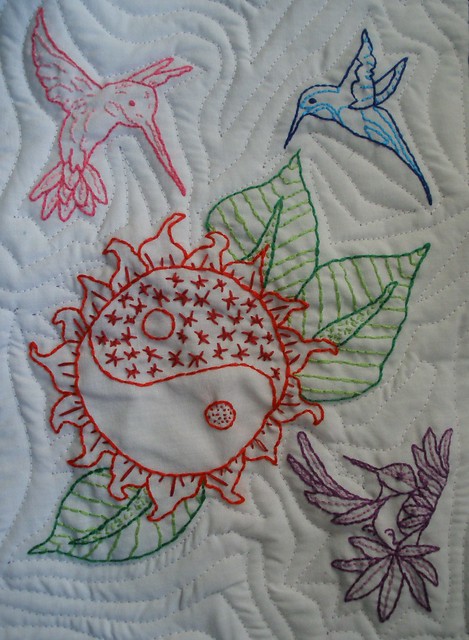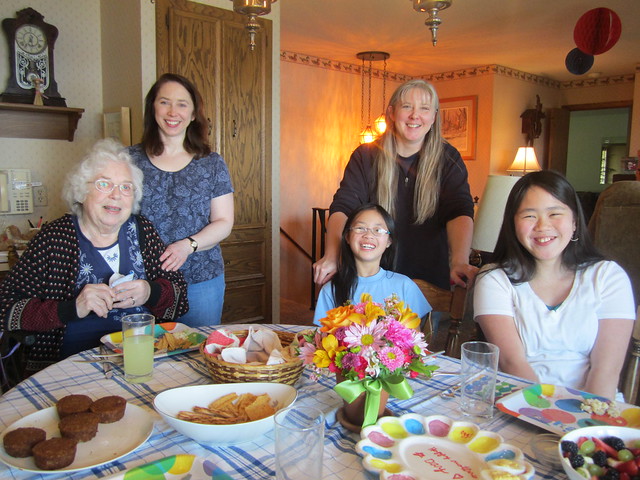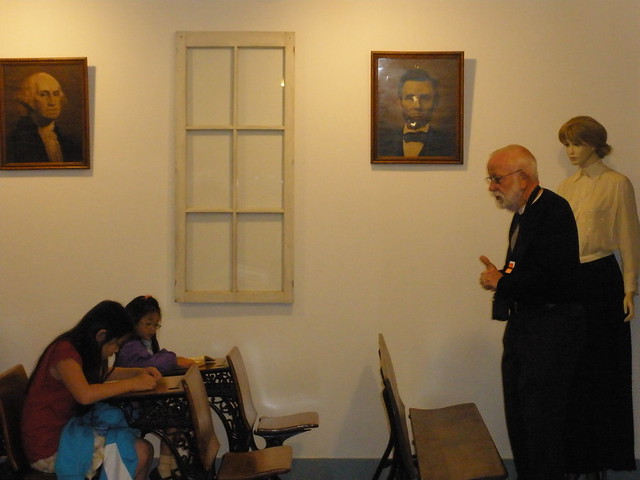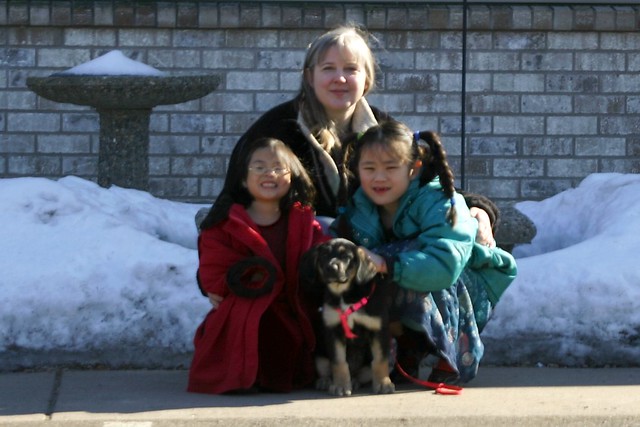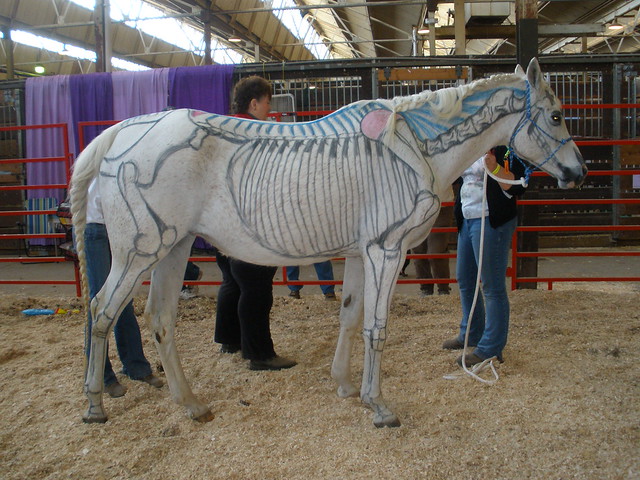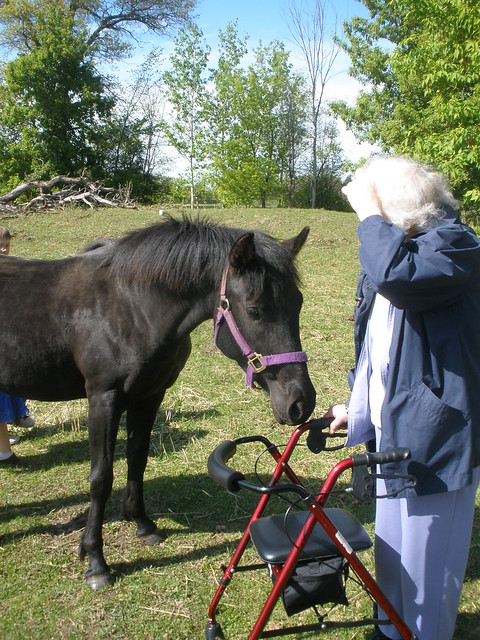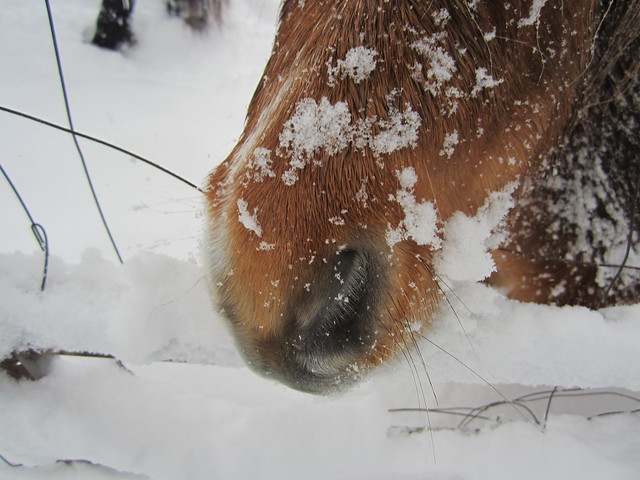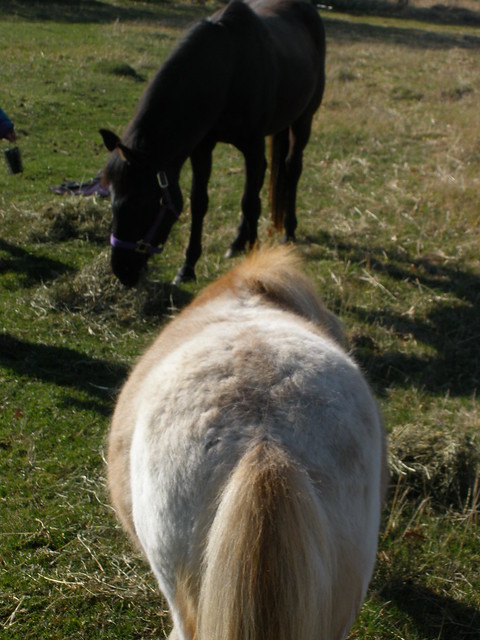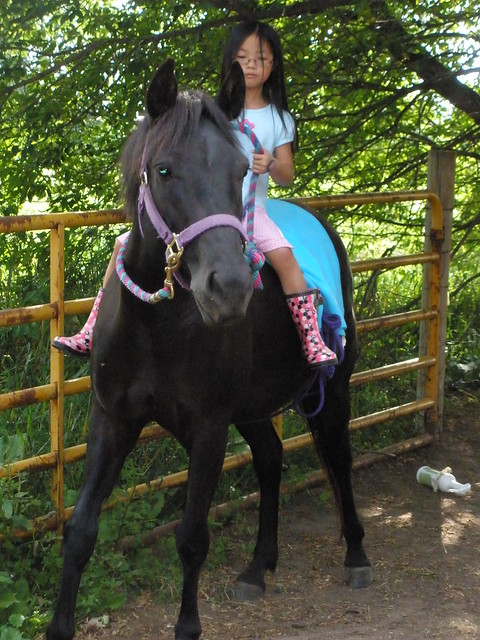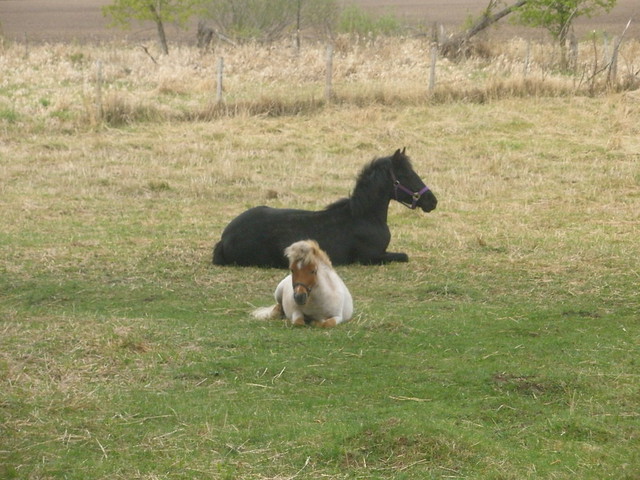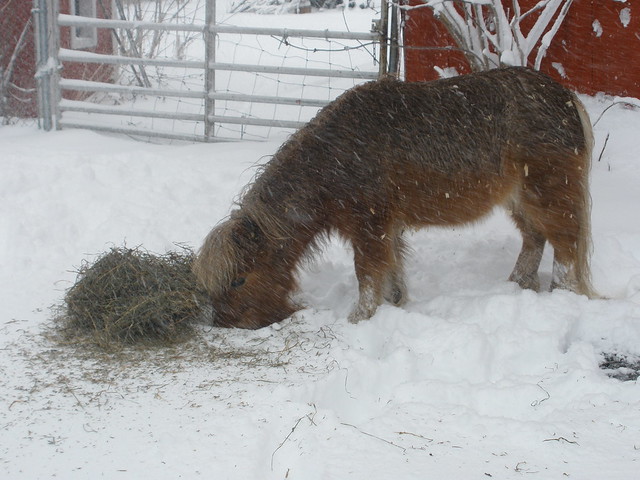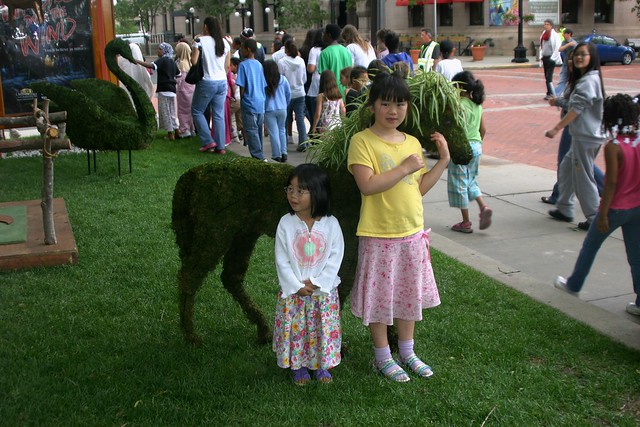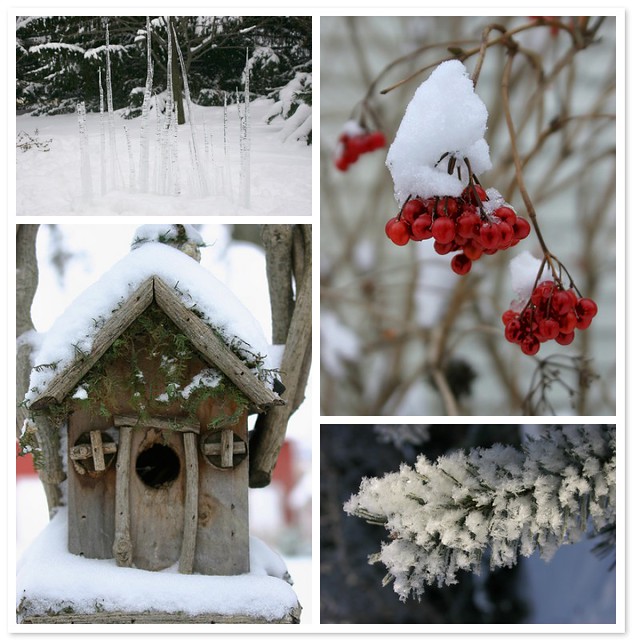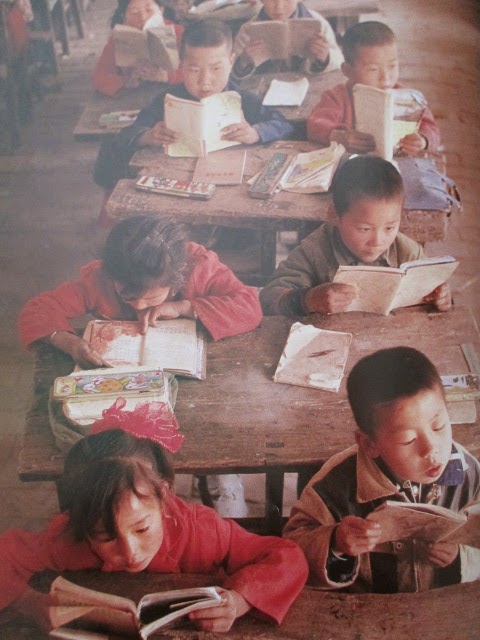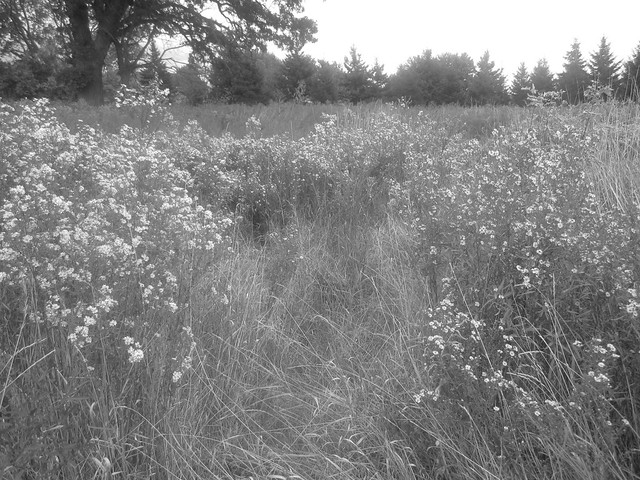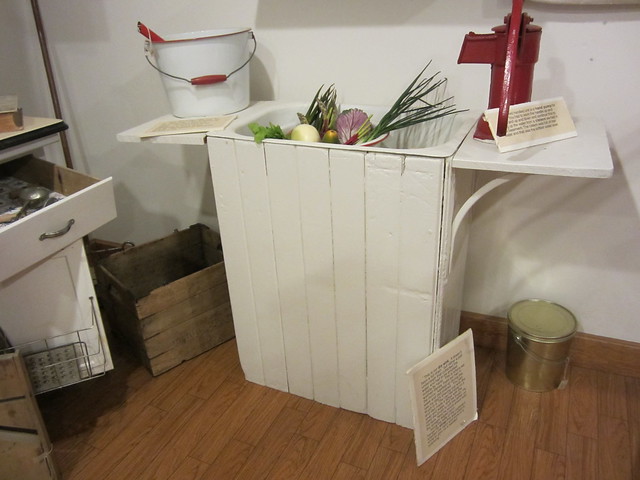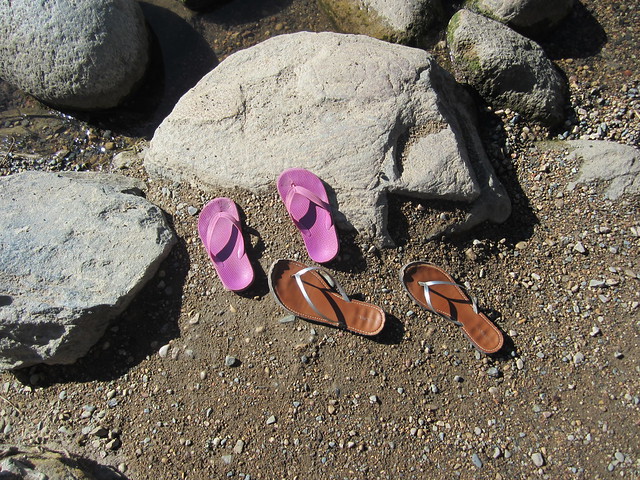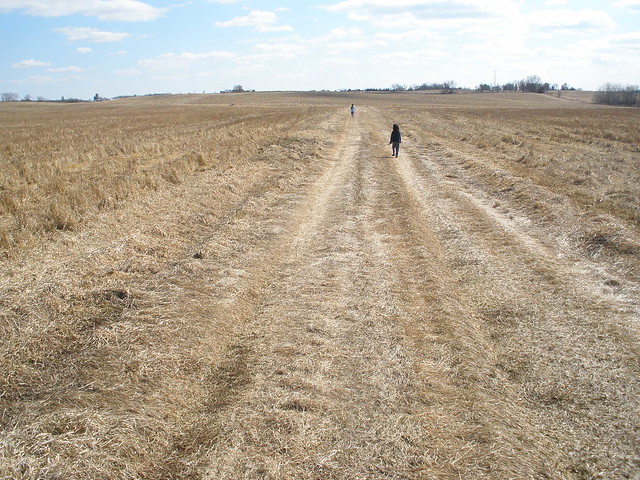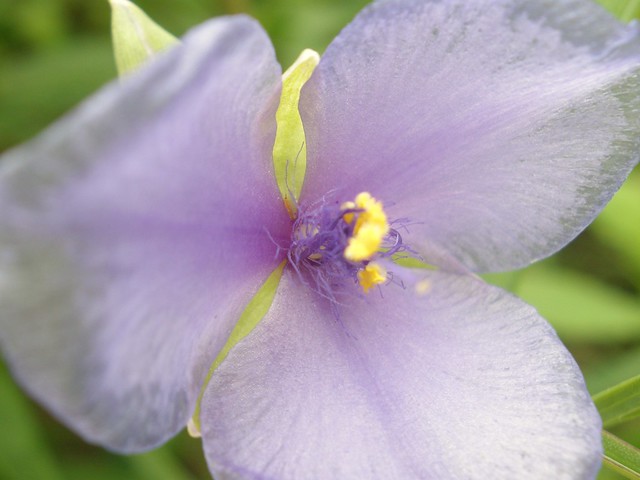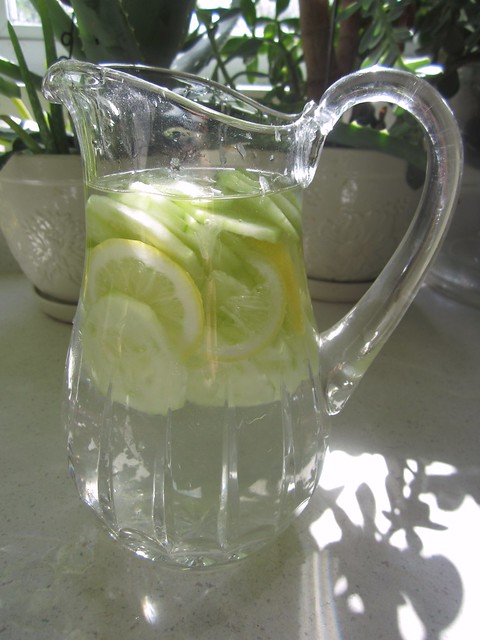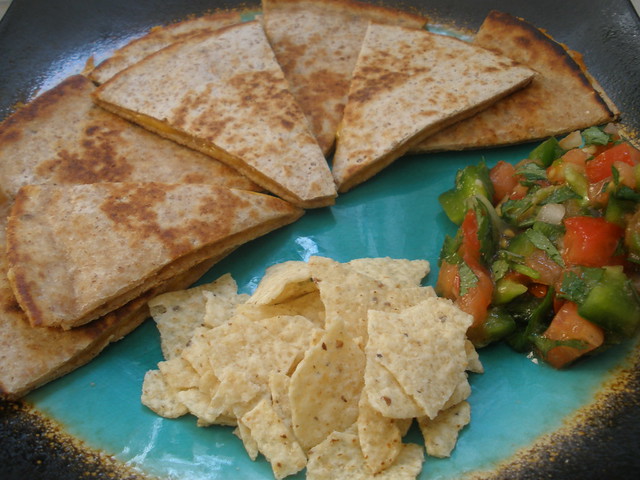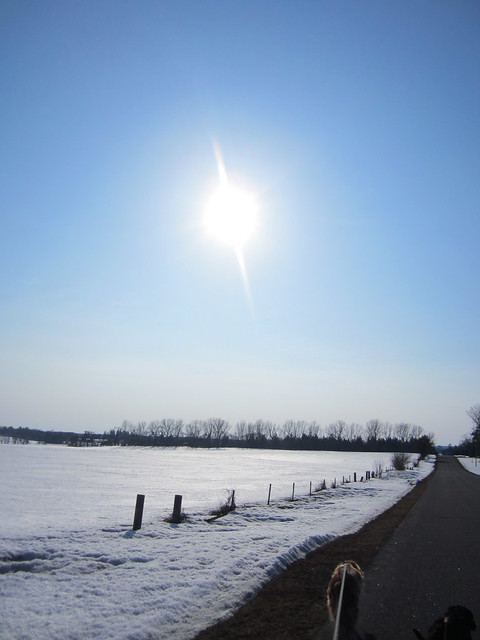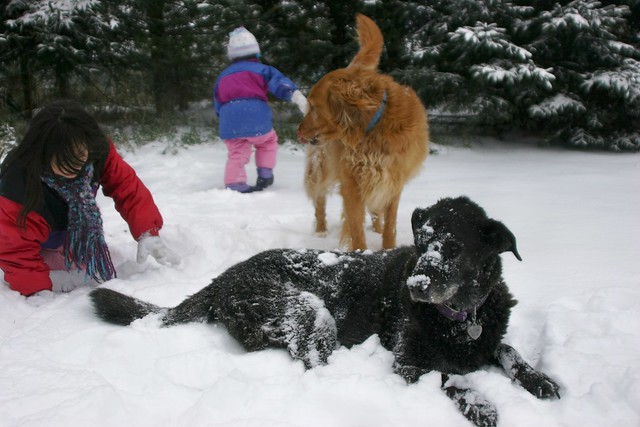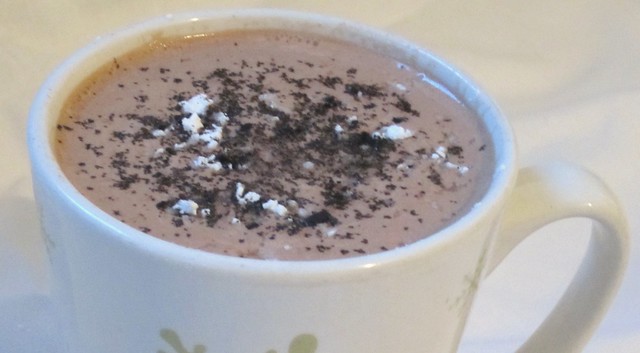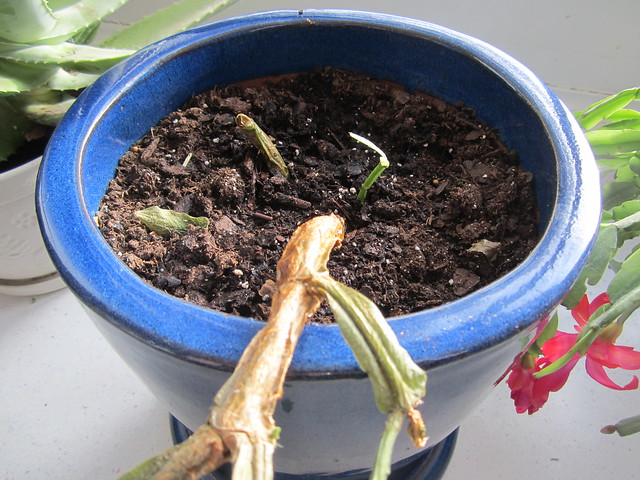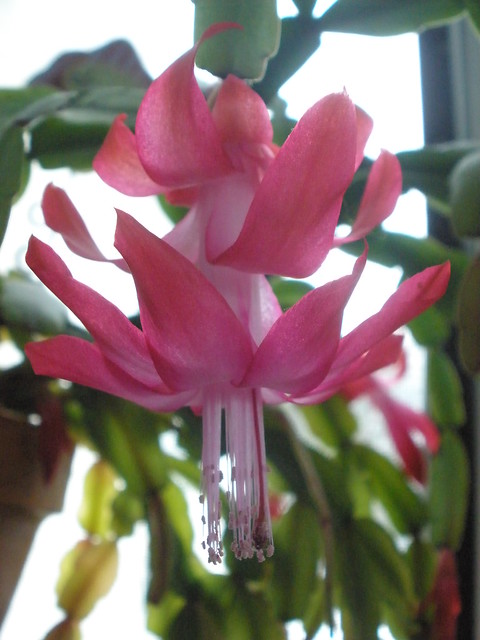Throughout 2015, I am going to do "Spiritual Practices A to Z" based on the spiritual practices that are shared on the
Spirituality & Practice website. There is a list available of spiritual practices that are from A to Z. Some letters have two practices, but the majority have one.
I am choosing to focus on one spiritual practice for two weeks, and then move onto another one (starting with the next letter of the alphabet). There are quite a few different ideas - from reading, watching movies, listening to music, looking at artwork, journaling, and doing spiritual exercises. I have picked some of the ones that resonated with me.
So, for the past two weeks, I have focused on the spiritual practice of attention.
Spiritual Practices: Attention
Enhances: Awareness
Balances/Counters: Distraction, Stress
The Basic Practice
Attention - a primary practice - is also known as mindfulness, awareness, concentration, recollection. We must stay alert or we risk missing critical elements of the spiritual life — opportunities for gratitude, moments of grace, and evidence of our connections to others. Attention can be practiced anywhere and anytime.
The blue pillowcase with the lime-green trim is the one I made.
The others were made by Sophia, Olivia, and youth of the 4-H Club
that I lead and which they are members.
Some of the pillowcases needed finishing and ironing,
so I did that before mailing them to Pine Ridge Reservation for
children living in extreme poverty.
I focused on each pillowcase I worked on and
thought about the child who will be receiving it.
Begin by doing one thing at a time. Keep your mind focused on whatever you happen to be doing at the moment. It is through the mundane and the familiar that we discover a world of ceaseless wonders. Train yourself to notice details.
Why This Practice May Be For You
Most of us have exhibited the symptoms of lack of attention at one time or another. Perhaps we are easily distracted by trivial pursuits, attracted to any media message, ready to jump into any conversation, or susceptible to periods of endless surfing through the information and choices available to us.
Without awareness, we eventually end up living in a daze of stimulation without any grasp of its significance. We are operating on automatic pilot. Because nothing truly registers on our consciousness, we feel drained of energy.
Christmas at my mom's home - although nice to
spend it with family - is rather chaotic and loud.
There are so many things going on - opening stockings, opening presents,
eating a meal together, and listening to multiple conversations.
It can get to a point, as the Spiritual Practices website noted,
that "...nothing truly registers...[and I] feel drained of energy."
Sometimes not paying attention has just the opposite effect, however: everything registers, and we find we don't know what to do with it all. We are so bombarded with stimuli that we can't focus on anything. We feel scattered and feel stressed.
For both lack of energy and stress, attention is a good corrective prescription.
Quotations
The quality of one's life depends on the quality of attention. Whatever you pay attention to will grow more important in your life.
— Deepak Chopra in
Ageless Body, Timeless Mind
A picture of Sophia, me, and Olivia
many years ago.
Just remember that those things that get attention flourish.
— Victoria Moran in
Shelter for the Spirit
Collage of winter images that I took in 2008.
There is a way that nature speaks, that land speaks. Most of the time we are simply not patient enough, quiet enough, to pay attention to the story.
— Linda Hogan quoted in
Listening to the Land edited by Derrick Jensen
Books
Everyday Sacred - A Woman's Journey Home by Sue Bender. I read this during the first week of January, and enjoyed it. There were many things that resonated with me, and that I have been reflecting upon. I wrote a
review of the book including some points that I wanted to remember.
I'm currently reading
Good Citizens by Thich Nhat Hanh. In it, the author explains the relevance of paying attention and being mindful in order to be more compassionate citizens who are set to repair the world. He shares five mindfulness trainings and their bearing on restoring the world.
Films
Crouching Tiger, Hidden Dragon is a Chinese language drama about love and the mythic battle between good and evil. Two masters of the Wudan style of martial arts are masters of the spiritual practice of attention.
The Scent of Green Papaya is a beautifully-photographed Vietnamese masterpiece that focuses on a servant girl's spiritual practice of attention and her mastery of the inner smile. I'm waiting for this DVD to be delivered from another library.
Music
Johann Sebastian Bach's
Goldberg Variations for harpsichord or piano consists of an aria in G Major, ten groupings of three variations, and a restatement of the aria.
As the Spiritual Practices website said, "Listening for the differences in style, rhythm, phrasing, and emphasis in the 30 variations requires concentration. After you focus on what elements distinguish each variation, the repeated aria sounds amazingly full and rich. Once we pay attention to details what we knew to be real takes on greater meaning and depth."
The library had this CD and I listened to the initial aria and variations 3, 8, 18, 19, 25, 29, and 30. As I listened to the quick-moving variations I was impressed both with Bach's composition skills as well as Glenn Gould's skills with playing the piano. This CD was enjoyable to listen to, and one that I'm happy to have found through the Spiritual Practices website.
Art
According to the Spiritual Practices website, "One of the best ways to expand our attention's capacity is to study photographs. Often we miss important and meaningful details in the flow of sights passing before our eyes. Photography fixes an image — stops the world — so that we have time to notice what we might not have noticed before. Seeing what has previously been 'invisible' to us is an essential part of the spiritual life."
A series of books that was recommended that fits with this spiritual practice is
A Day in the Life. The series presents photographs taken by an international team of photographers during a 24-hour period in one country. I checked out from the library three books in the series: Africa, China, and Ireland. Each books is so different from the other in terms of content and photography style.
As I looked at the pictures, some were ones that I glanced over. Others, however, were ones that I spent time with and could see an element or detail that clearly caught the photographer's eye.
CHINA
First graders in the rural town of Yulin in China learn some of the 140,000 characters that make up the Chinese lexicon. (Photo in book by Stephanie Maze, USA)
This is the Daning River that runs from the mountains of Sichuan down to the Yangtse. Here it meanders around the town of Wuxi. It reminds me of the village where many senior citizens lived that was near Chongqing (a couple hours from where Olivia's orphanage was located). We were told that we would never see this village again because it - along with thousands of others homes and villages - would be under water once the dam was built and operational. (Photo in book by Rick Rickman, USA)
A woman and child in Tibet. (Photo in book by Steve McCurry, USA)
A woman in Tibet. (Photo in book by Steve McCurry, USA)
AFRICA
A woman in Addis Ababa, Ethiopia. (Photo in book by Peter Bialobrzeski, Germany)
A girl in Jamaame which is in the lower Juba region of Somalia. (Photo in book by Sebastiao Salgado, France)
Two men praying for a sick church member on Badagry Beach in Lagos, Nigeria. (Photo in book by Jodi Bieber, South Africa)
A girl carrying fresh lettuce in Bangui, Central African Republic. (Photo in book by Nick Kelsh, USA)
A woman carrying wood in Bangui, Central African Republic. (Photo in book by Nick Kelsh, USA)
IRELAND
A man on a moped moves along a flock of sheep in Kerry. (Photo in book by Annie Griffiths, USA)
I've never seen anything like this before. The description in the book said that "on Achill Island in County mayo, a 21st-birthday surprise party comes with a twist: the invasion of eight Strawboys in hats of straw and long white gowns. The custom is said to date back to the 18th century, when masked rustlers preying on a landlord's cattle escaped capture by ducking into a packed wedding celebration and joining in for a dance or two. Today's Strawboys come equipped with an accordionist and a repertoire of traditional steps to entertain the guests. (Michael Bryant, USA)
On the Spiritual Practices website, it said "To expand this exercise, take a camera with you for a day and practice framing pictures through the lens. It is not necessary to put film in the camera to have it act as an aid to your attention. What did your camera's eye pick up? Think of your photographs as mirrors of your attention."
So, I took my digital camera and tried to capture what a day in my life looks like. Things that I saw and that represented how that particular day looked like to me. In this case, it was Sunday, January 11th.
Cooper looking out the window to the west to watch rabbits and squirrels.
Cooper looking at the horses in the pasture connected to the backyard.
As I'm getting up to go downstairs,
Cooper is taking one last look out the window.
Aspen and Cooper eagerly run outside.
The horses are eating next to the barn.
Now it's time for morning breakfast for the dogs...
and time to feed the cats.
We haven't had pancakes for awhile,
so I make them for whoever is up early in the morning.
It looks like Olivia and I will be
having breakfast together this morning.
I've been taking it easy for the past couple of weeks
after having a lot of pain in my lower back.
I found out that I have two bulging disks
that are pinching on nerves.
This is on top of degenerative disk disease.
So, a walk around the backyard will have to suffice
rather than a three-mile walk with the dogs.
Someone is peeking out the back of the barn at me.
I realize that - as I look at this picture -
that spring will mean some barn repairs and painting.
It's snowing a bit, and Bailey has
some snowflakes on near her eyes.
This is the candle holder that's on the side of the barn.
As I made my way to the front yard later that morning
to get the newspaper,
I followed a pheasant's tracks.
It led to the tallest pine tree at our farm.
Making my way back, I noticed the bright red berries.
They are waiting for the cedar waxwings to return.
When I come back inside, Shadow is waiting for me.
As I walk upstairs, I hear beautiful harp music.
Sophia is playing her harp.
While Sophia plays the harp,
Olivia is working on her piano theory book.
I decide to write about what I saw outside in my nature journal.
The pheasant tracks are what I focus on.
While I'm writing, Aspen is right by me.
She has her eyes on Eenie (the cat)
who is relaxing at the end of the bed.
All throughout the afternoon, the birds visit the feeder.
At this point, I stopped taking pictures.
I'm not sure why...
maybe it was enough for the day and
what were highlights for me.
Daily Cue, Reminder, Vow, Blessing
•
When I watch a musician, I am reminded of the importance of focused attention.
Olivia practicing the piano.
•
Greeting a family member, friend, or colleague in the morning, I vow to be attentive to his or her needs today. I was able to practice this on Saturday, January 10th. There was a challenge with staffing with my mom's home health aides, and I had to listen to three different people to assess the situation and determine how to resolve it.
Later, my sister shared that her 17-year old cat, Suki, wasn't doing well and it looked like it was nearing the end of her life. She has never had to make a decision to euthanize a cat before, so we talked about that process, what steps to take to honor Suki's life and time as part of my sister's family, and when to make that difficult choice. Although Suki seemed to be doing better in the afternoon, it did make my sister reflect upon what will need to happen and what to do when that time comes.
Practice of the Day
He stared out at the ocean and said, "Look at the view, young lady. Look at the view."
And every day, in some little way, I try to do what he said. I try to look at the view. That's all. Words of wisdom from a man with not a dime in his pocket, no place to go, nowhere to be. Look at the view. When I do what he said, I am never disappointed.
Anna Quindlen in
A Short Guide to a Happy Life
To Practice This Thought: Take time to really see what is right in front of you.
Even flowers that are passed their prime and
have faded to the palest tan are rich with detail and beauty.
Spiritual Exercises
The poet and doctor William Carlos Williams used to carry a notepad around with him in which he listed "Things I noticed today that I've missed until today."
Make his practice into an ongoing project in your home or group. Every morning, remind yourself that during the day you are going to notice something new or see a familiar sight in a new way.
****
Before starting this exercise, I read
To All Gentleness - William Carlos Williams - The Doctor Poet by Neil Baldwin since I never heard of Williams. I thoroughly read about five chapters of the book to gain more insight on who Williams was, and then skimmed through the rest of the book to read excerpts from his poetry. Some of the poetry that caught my eye includes:
Taken on September 25, 2011
Child of the grass...
Thou that art sweeter than all orchard's breath
And clearer than the sun gleam after rain...
A lady tall and fair to see
She swayeth as a a poplar treet
When the wind bloweth merrily.
*~*~*
Taken on June 10, 2012.
In brilliant gas light
I turn the kitchen spigot
and watch the water plash
into the clean white sink.
On the grooved drain-board
to one side is
a glass filled with parsley -
crisped green.
*~*~*
Taken on September 5, 2012.
Waiting for the water to freshen -
I glance at the spotless floor -:
a pair of rubber sandals
lie side by side
under the wall-table
all is in order for the night.
*~*~*
Taken on April 8, 2009.
The farmer in deep thought
is pacing through the rain
among his blank fields, with
hands in pockets,
in his head
the harvest already planted.
A cold wind ruffles the water
among the browned weeds.
On all sides the world rolls coldly away:
black orchards
darkened by the March clouds -
leaving room for thought.
Down past the brushwood
bristling by
the rainsluiced wagonroad
looms the artist figure of
the farmer - composing
- antagonist
*~*~*
Taken on June 25, 2011.
A bunch of violets clutched
in your idle hand
gives him a place
beside you which he cherishes.
*~*~*~*~*~*
Jan Chozen Bays is a pediatrician and meditation teacher In the book
Mindful Eating: A Guide to Rediscovering a Healthy and Joyful Relationship with Food by Bays, she shares a wise and practical Zen Buddhist approach to mindful eating.
These are some concepts that relate to the spiritual practice of attention:
• Mindful eating is about opening the mind's awareness to our food and to the body, before, during, and after we eat.
• Mindful eating is nonjudgmental.
• Awareness is the key to change. Once we are aware of something, it cannot remain the same. Awareness plus small changes in our automatic behaviors can produce large changes over time.
• Learn to assess stomach and cellular hunger before you eat, during eating, and after eating.
• If you are not hungry, don't eat.
• Be present for at least the first three bites or sips as you begin to eat or drink.
Taken on September 3, 2012.
• Eat small portions, considering 'right amount.' Serve yourself an amount of food that will leave you two-thirds full.
• Eat slowly, savoring each bite. Find ways of pausing as you eat, such as putting down your fork or spoon between bites.
• Chew your food thoroughly before swallowing.
• Become aware of the difference between 'no longer hungry' and 'full.' There is no need to eat all the way to 'full.' Eat until you are two-thirds full, then take a drink and rest a bit.
• Mindful eating includes mindless eating. You can choose to eat mindlessly when it is appropriate.
• Emptying is as important as filling. This applies both to the stomach and to the mind.
• At least once a week, eat an entire meal in silence and mindfulness.
Taken on March 13, 2011.
• Know that food changes mood and use it as good medicine. Adjust the dose; a small amount may work better than a lot.
• Remember the energy equation: balance the energy going into your body with the energy going out.
Taken on March 28, 2013.
• Above all, know when it is not the body but the heart that is asking to be fed. Give it the nutrition that fills it up. That nutrition could be meditation or prayer, walking, being in nature, listening to or making music, playing with a pet, fixing food for someone you love or who needs help, or just sitting and being present with people. Fill the heart with the richness of this very moment.
Casey and Montague with Sophia and Olivia.
Taken on December 2, 2007.
• Before, during, and after eating, give thanks."
***
I have been focusing this year so far on proportion size and eating when I'm hungry. I've noticed that a few times during the night during the past couple of weeks that my stomach will growl - so I believe I'm eating more appropriately than in the past.
One day - January 8th - I started the day with a bowl of oatmeal and raisins along with a cup of hot chocolate. It was one serving size, but I couldn't finish it. After about half of it, I was full so I stopped eating.
That morning, I prepared for a 4-H meeting that afternoon. I left at noon to set-up, but was not hungry so I didn't eat lunch. By the time I got home at 4 p.m., I felt a little hungry so had two slices of cheese and 3 slices of summer sausage. I also had another hot chocolate so I'm drinking milk and getting calcium each day.
Cup of hot chocolate.
This is a picture that I took in the past.
Now, I usually put some mini-marshmallows on top.
Dinner was around 6:45 p.m., and was a baked potato and small piece of pork roast. I chose not to have a dessert since I was full.
Journal Exercises
The descriptive writing in your journal gives you insights into the quality of your attention. Read through your journal looking for entries that take you back to a specific place, time, or conversation.
***
Some excerpts from my journal since the beginning of 2015:
"...then the flooding began - first with the ice dam in my office, family room, and Sophia's room. Then in the basement from spring until October. Oh! And then in July with the upstairs bathroom. Four out of 13 rooms in the house - plus the basement - were affected."
"...On yesterday's walk with the dogs, I enjoyed the changing colors of the clouds as the sun set. They went from gray to shades of yellows and oranges. As we walked back, the bright, white moon emerged from behind the clouds."
"...This morning Mom called at 4 a.m. I had just fallen back to sleep after the dogs woke me up around 3. Her blood sugar was 34, went up over 100, and then back down to 70-something. They had called the paramedics..."
"...as I was taking down the ornaments I focused on them and tried to remember where they were from and/or what they represented."
"...Aspen slept next to my side - curled up in a ball next to my stomach. I followed her breathing. How my breathing pace and hers would alternate."
"...during the night I listened to the strong wind. The windchimes were loud."
"...the horses were having fun in the pasture. Bailey was standing on her hind legs - so was so tall. It was such an incredible sight. She did that a few times. Then she would jump in the air - sometimes all four feet off the ground. She and Hoss were kicking their legs in the air. They would cantor around the pasture, and then Hoss would tear around like a little madman - hiding in the pine trees and then come dashing out."
Discussion Questions, Storytelling, Sharing
Give an example of something that has flourished because of the attention you have lavished upon it.
***
I had trouble thinking of something that I have recently given a lot of attention to that has flourished. Perhaps the 4-H club that I started in October would be an example of that. When I look at what the club members have done in only four meetings and what we have done as a club to get it established, I can see that it is doing exceptionally well.
When I think back a bit further, I thought about a plant that I focused a lot of attention on. My sister had a Christmas cactus that my dad had given to her. It wasn't do well at all and she brought it to me in February 2013 to try to help save it. I cut all the dead and weak parts off of it, and then began rooting cuttings from the healthy part of her plant as well as my Christmas cactus (also a gift from my dad).
This picture was taken on February 23, 2013, of
the Christmas cactus that my sister hoped I could save.
A year later, it was doing very well. The plant was again healthy and thriving. I gave it back to her on her birthday in May 2014.
This is my sister's Christmas cactus on December 3, 2014.
She was so happy to see blooms and flowers on the plant less than seven months later...in December 2014.
By December 3, 2014, it was blooming -
just in time for Christmas.
Household, Group, and Community Projects
Make a visual record of your expanding awareness of the world. Once a week, find or draw something to represent one of your observations and paste it on a wall calendar. Over time you will find yourself becoming more attentive as you gather material to include.
***
I thought about this exercise and felt like the best way I could do this was to combine it with nature journaling and trying to take one photograph a week that captures some element outdoors that I want to remember. I did two nature journal entries - one focused on pheasant tracks and one focused on the red berries of the viburnum.



















